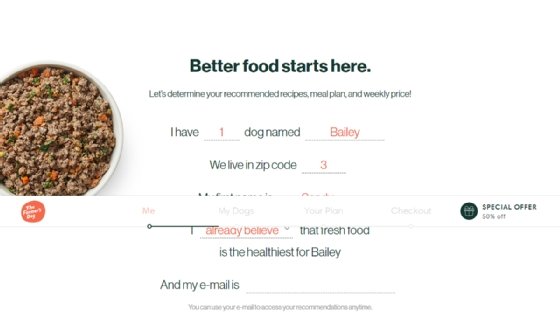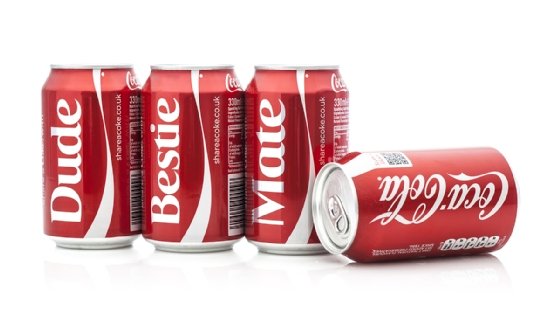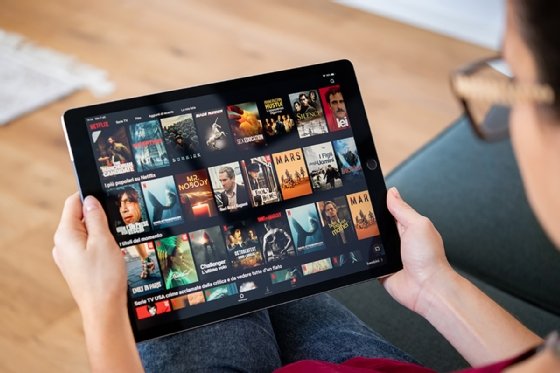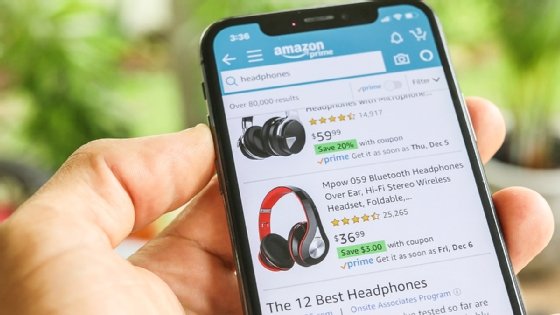
chris - Fotolia
Top 5 personalized marketing examples and their takeaways
Personalization is a marketing tactic that is easy to get wrong. Learn from the best with five examples of successful campaigns that used personalization.
The goal of personalization is to capitalize on customers' habits without invading their privacy, which can be difficult to achieve.
As data algorithms and machine learning evolve, personalization efforts have become more expansive. Brand leaders, such as Amazon, Netflix and Coca-Cola, have led the way in offering personalized experiences to their customers.
However, you don't need to work for an industry giant, like Amazon, to achieve personalization. You can ask a simple segmentation question; take a middle-level approach, such as geotargeting; or deliver personalized images and curated recommendations.
No matter what direction your company takes with its marketing campaigns, personalization is a way forward. In an era where privacy and security concerns grow, however, you must strike the right balance and err on the side of caution.
Here are five ways you can offer personalization to customers -- without being pushy or creepy.
1. The Farmer's Dog's segmented emails
Sending targeted email campaigns is one of the most effective ways to increase engagement and drive more sales. Segmented email campaigns have a 14.31% higher open rate and a 100% higher click rate than nonsegmented email campaigns, according to a MailChimp study.
The Farmer's Dog, a pet food e-commerce company, used its customers' site visits to conduct a simple segmentation to engage customers and help them find food options for their pets. The Farmer's Dog could sort their subscribers into multiple lists based on initial needs.

Takeaways
- Ask the right questions. A straightforward, effective way to segment your audience for personalization is to ask the right questions. Asking customers their reasons for visiting a website, becoming a user or subscribing to email can be remarkably easy but invaluable. It can give you insightful data that can lead to your business sending incredibly targeted emails.
Using best email practices, The Farmer's Dog recognized that not everyone was joining its site for the same reason. The Farmer's Dog developed a strategy that would make its emails more personalized. It asked visitors four simple questions: how many dogs, the dog(s) names, zip code and the pet owner's first name. It also asks prospective customers about their beliefs regarding fresh food for pets: "I [already believe, am not yet sure, or don't believe] that fresh food is the healthiest for [pet's name]," along with asking for an email address.
Based on the answer, the company assigned visitors to one of three separate segments. It sent different targeted emails to segments to find additional information, such as the pets' needs. Further, if there were indications that the vistor would leave the site, a pop-up would ask for other feedback on how the company might assist them in going forward. The net result was a much more engaging customer experience that did not require much information. The Farmer's Dog also gained more information about its visitors for future emails on their pets' needs. - Build customer personas. As many companies can attest, segmenting your customers can work; you can take it even further using customer personas.
Customer personas are built using a multitude of data. Like The Farmer's Dog, you can group customers using a mix of attributes and actions to create more specific categories and address possible needs.
2. Hertz's geotargeted landing pages
For companies that operate across geographies, geotargeting is an opportunity to personalize landing pages based on the user's location and provide dynamic presentations. Geotargeting has become an effective tactic, especially for users on mobile devices.
Since over half of searches for local businesses come from mobile, it's crucial to have a reliable mobile-focused lead generation approach to increase your conversion rates.
Hertz, the rental car company, uses personalized landing pages based on the visitor's country of origin. Instead of providing a generic hero image, Hertz provides a landing page tied to the country's culture and demographic. For example, website visitors from Singapore see messaging such as "driving from Singapore into Malaysia," while Chilean website visitors see tropical imagery. Hertz tailors the website's language, imagery and messaging to users' locations.

Takeaways
- Take advantage of customer sign-up data. You can implement this approach by using customer data to segment customers into groups by geography. Take it a step further by using relevant information that customers provide at the time of signup, such as interests, culturally relevant images or previous search history within the site.
- Use location-based personalization tools. Tools such as Adobe Experience Platform, Purple, Radar and Kumulos can all implement personalized experiences based on location.
3. Coca-Cola's personalized packaging
Ogilvy's "Share a Coke" campaign for Coca-Cola initially launched in Australia in 2011. Coca-Cola printed the soda bottles' wrapping to say "Share a Coke with…" and a popular name instead of Coca-Cola.
The campaign generated 12 million media impressions, representing a 7% increase in young adult consumption and a 4% increase in category. When the "Share a Coke" campaign reached the U.S., sales increased by more than 2%, reversing more than 10 years of declines.
Coca-Cola didn't stop with personalizing names. As an extension of branded bottles and cans, Coca-Cola's 500-stop cross-country "Share a Coke" tour invited fans to customize a mini-can for themselves and a second for someone special.
Over the years, the "Share a Coke" campaign continues to evolve. It went from 250 initial names to 1,000 names in 2015. Coca-Cola followed this up with an e-commerce shop where consumers could order personalized bottles. Next, Coca-Cola added song lyrics to the bottles' packaging. In 2018, Coca-Cola turned name labels into removable stickers that could be fastened to clothing, cellphones, notebooks and other items.
Finally, in 2020, a year marred by a global pandemic, alongside Coca-Cola's iconic Santa and polar bears holiday campaign was the continuation of its "Share a Coke" campaign, dedicated to "holiday heroes." Coca-Cola introduced 40-plus monikers dedicated to nurses, teachers, doctors, moms and grandparents.

Takeaways
- Encourage engagement. Coca-Cola encouraged customers to take selfies with the product and share on social media platforms, putting the customers in control. It enabled customers to put their interactions with friends and family on display as a part of the Coca-Cola story.
This approach was extremely successful. During the first year of the campaign, customers using the #ShareaCoke hashtag shared more than 500,000 photos. The result was roughly 25 million new Facebook followers for Coca-Cola the same year.
You can take this approach by prioritizing user-generated content on social media. For example, you could retweet and share users' posts that mention your brand. - Make a personal connection. When customers see their name, the name of a friend or the name of a family member printed on the bottle's side, it creates a personal connection. The ability to build this type of relationship between customer and brand is central to generating loyalty. For millennials, personalization is vital. The "Share a Coke" campaign enables them to connect with friends and family and, more importantly, express themselves, as well as invite others into their lives.
Coca-Cola also provided alternative pre-printed options, such as "BFF," for those with more unusual names that were not represented among the 250 name options. Given the number of options on the bottles and cans, customers can feel an incentive to purchase more soda to get the name that they want.
You don't need to print customers' names on a product to make a strong connection; you can simply offer opportunities for customers to personalize products or web experiences based on their preferences.
4. Netflix's personalized images
When many of us think personalization, we can't help but think of Netflix recommendations. Netflix is famous for it. The online video streaming company provides its users with a customer experience built on its data by presenting titles of TV shows and films that might interest users based on their viewing history and rankings. Netflix continues to focus on its recommendation engine, which uses machine learning algorithms and data to enrich its personalization platform.
Netflix takes personalization a step further with its "landing cards," or thumbnails created for specific movies or TV shows. Netflix does not just use a standard teaser image, but instead creates a variety of teaser images and displays that would appeal best to a specific user. For example, one person may receive an image showing an actor that they recognize, while another person may see an image that captures an actionlike or horrorlike scene, depending on the genres they typically watch on Netflix. The result is a hyperpersonalized marketing approach that maximizes users' interest.

Takeaways
- Obtain preferences from customer data. Use existing customer or user data related to preferences or interests in order to provide recommendations to the viewer.
- Let the customer personalize. If your offering is a design-driven product or lends itself to multiple colors or layouts, present the options from a lineup of options. Or present the basic design, and let customers pick their preferred design or color palette. Better yet, if customers have previously made selections or past purchases, use that data input to guide what you present to them.
5. Amazon's curated recommendations
This list of personalized marketing use cases would not be complete without Amazon, a pioneer in mining and using customer data. Amazon Personalize is a machine learning service that provides personalization through recommendations in various scenarios, such as making recommendations to enhance UX when browsing and shopping on the site. Amazon Personalize can also present recommendations based on user preferences and behavior and personalize content for emails and notifications.

Takeaways
- Aim to recommend like a friend would. Recommendations provide pleasant UX but, more importantly, ones that feel personal. For Amazon, the desire was to mimic online the discovery process that is like talking "with a friend who knows you, knows what you like, works with you at every step, and anticipates your needs," according to Brent Smith of Amazon and Greg Linden of Microsoft in their paper, "Two Decades of Recommender Systems at Amazon.com." The result has been the ability for Amazon to capitalize on its personalization efforts.







